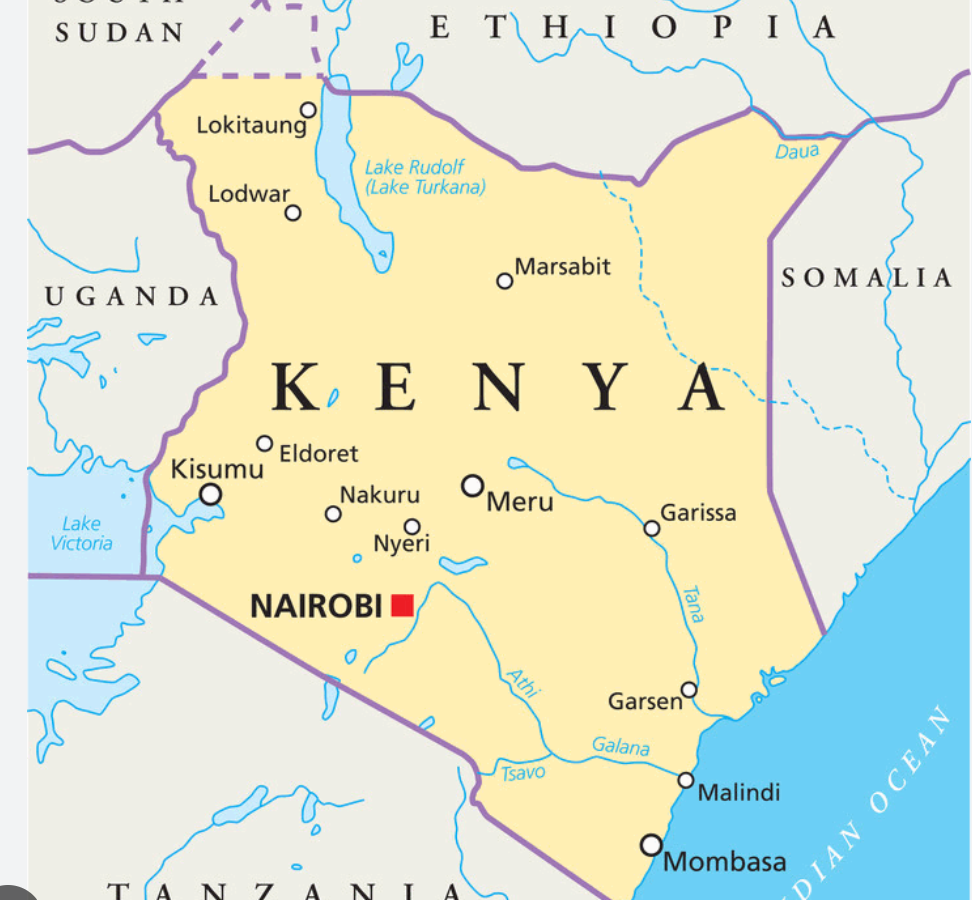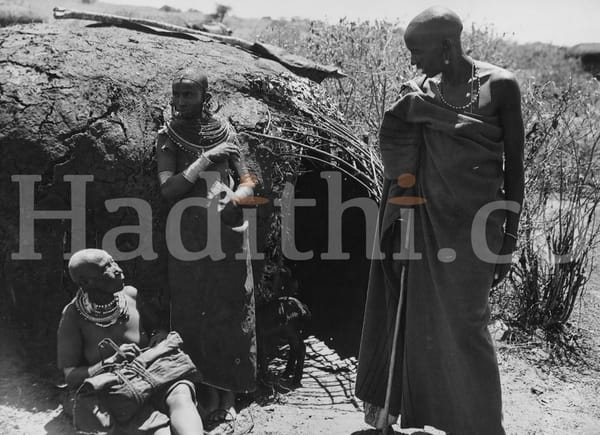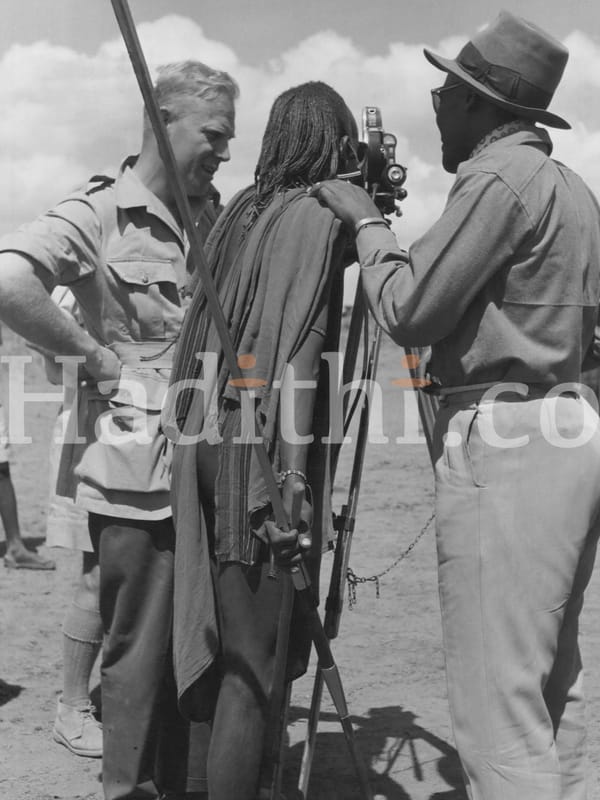Kenya's Political Transformation
The Republic of Kenya, or Jamhuri ya Kenya in Kiswahili, is an East African country member of the United Nations, the African Union, and the East African Community, among other international institutions. It gained independence from British colonialism in 1963.

According to the 2019 census, the country had 47.6 million citizens in that year. The country's most prominent capital city is Nairobi, while the oldest and second largest city is Mombasa, the country's port city. Historically, Mombasa acted as the British East Africa's protectorate's capital and was used to govern Kenya and the southwestern regions of Somalia. Kenya has five neighbors: Tanzania, Uganda, South Sudan, Ethiopia and Somalia. The fact that the country has a reasonably large coast means it acts as a gateway to landlocked countries in the region, including Uganda, Burundi, Rwanda, South Sudan, and Ethiopia.
Kenya's population distribution, climate, and geography vary from the cold and fertile highlands in places such as Mount Kenya to semi-arid and arid areas and deserts, including the Nyiri and Chalbi deserts. Historians argue that the first people to inhabit Kenya were the Hadza people, who were hunters and gatherers. Based on the archaeological dating of related artifacts, archaeologists say that the Cushitic people settled in the country's lowlands between 3200 and 1200 BC. Nilotic pastoralists such as the Maasai and Turkana, among others, migrated from modern South Sudan into modern-day Kenya around 500 BC. In comparison, the Bantus migrated to the country's coast and interior around 250 BC and 500AD.
The Country's Colonial History
The contact between areas in modern-day Kenya and the Europeans began in 1498 when the Portuguese reached the waters of East Africa as Vasco Da Gama's fleet arrived on its path to the East Indies. On Vasco Da Gama's first voyage, he had negotiations with Malindi's ruler. The relationship between the ruler of Malindi and the Portuguese acted as the foundation for the regional Portuguese network for at least 100 years. The fact that the Portuguese aimed at controlling and dominating the lucrative Indian Ocean trade meant that they conquered a few city-states on the East African coast. The domination of the foreign Portuguese network created resentment among the local population, leading to many uprisings and insurrections against them. After facing local uprisings aided by the Omani Arabs, the Portuguese were eventually expelled from the coast. Subsequently, the Omani Arabs relocated their capital to Zanzibar to secure control over the entire East African coast and prevent the Portuguese from returning. This Omani Arab rule persisted until the onset of British colonialism.
Colonial Rule
Like most African countries, Kenya fell under colonial rule during the scramble for Africa when the Berlin Conference partitioned the continent among European rival powers in 1884. During the conference, the British were able to acquire Kenya, among other territories in Africa. They established the Imperial British East Africa Company to govern Kenya under the British East Africa Protectorate name/label. After realizing the company could not contain the hostility among some Kenyan communities, the British officially declared Kenya a protectorate and colony on July 1, 1985. The colony's first governor was Sir Arthur Hardinge, who went ahead and formed a formal British government.
Under the British colonial rule, Kenya was subjected to harsh social, economic, and political policies. These policies included the displacement of native populations from fertile and productive lands to make way for British settlers. Racial discrimination was rampant, with the indigenous populations being treated as second-class citizens or worse, while the European settlers enjoyed a privileged position in society. Harsh labour laws were also enacted, forcing native Africans to work for meagre wages in public works and colonial farms. These punitive policies led to the rise of anti-colonial movements and protests in the early 1920s, marking the beginning of the struggle for independence.
The anti-colonial struggle gained momentum with the formation of associations or political parties such as the East African Association, the Young Kikuyu Association, the Taita Hills Association, and the Young Kavirondo Association, among others. These associations represented the Africans against forced displacement, heavy taxation, low wages, racial discrimination, and forced labor. The pressure on the British colonialists increased between 1944 and 1960 due to elevated African political activity. Most of the associations chose a peaceful path to fight for independence and the rights of the African population. However, the Mau Mau movement, a militant group, emerged as a response to the oppressive colonial rule. The Mau Mau movement, led by figures like Dedan Kimathi, resorted to armed resistance to fight for their rights.
The first nationalist party formed in Kenya was the Kenya African Union in 1944. In the same year, Eliud Mathu became the first African to be nominated to the Legislative Council, which was dominated by the colonial settlers. Resentment towards colonialism and the slow pace of political and economic change led to the breakdown of law and order in the early 1950s when the Mau Mau rebellion caused havoc in the colony. In 1952, the governor, Sir Evelyn Baring, declared a state of emergency to contain the Mau Mau rebellion, which demanded the restoration of land rights, an end to racial discrimination, and faster political progress. Although the colonial administration successfully contained the Mau Mau rebellion and killed its leader, Dedan Kimathi, the state of emergency only strengthened the political resolve to fight for independence. As a result, the colonial regime was forced to create constitutional proposals to appease the majority African population.
The 1954 Lyttleton constitution allowed Africans to vote directly for their legislative council representatives. Elections were subsequently held in 1957, leading to the election of eight African leaders: Oginga Odinga, Tom Mboya, Muliro, Oguda, Daniel Toroitich arap Moi, Mate, and Ronald Ngala. The election of the Africans into the legislative council led to increased agitation for broader representation and complete independence. After intense negotiations, the Africans in Kenya decided to form a mass movement or organization to help mobilize the people for a final assault on colonial rule. The Kenya African National Union (KANU) was thus formed in March 1960 in a Kiambu town. However, the fear of domination by large ethnic groups led to the formation of the Kenya African Democratic Union (KADU) on June 25, 1960. KANU won the elections in 1961 under the first broad electoral register. In May 1963, another election was held where KANU won 83 of the 124 seats in the parliament/house of representatives and went on to form the first Madaraka Administration on June 1, 1963, as well as the first independent government on December 12, 1963, under Mzee Jomo Kenyatta.
Independent Kenya
After independence, KANU absorbed most rival groups, and the opposition was largely ineffective or banned. However, this would change after Oginga Odinga, the first Minister of Interior, broke away from KANU to establish the Kenya People's Union, a left-wing opposition party. The split was because Oginga Odinga had socialist views, which conflicted with Jomo Kenyatta's capitalist and centrist views. Kenyatta outlawed the KPU in 1969 and placed some of its leaders, including Oginga Odinga, under government detention. As such, KANU ran for the 1969 election unopposed, and by 1974, membership in KANU became a requirement to get a government job. Oginga rejoined KANU in 1971 after being released from detention but was not allowed to run for parliament as he never regained Kenyatta's trust and confidence.
After the death of Mzee Jomo Kenyatta in 1978, Daniel Arap Moi became president and continued to suppress opposition within the Kenya African National Union (KANU) and outlaw any opposition from outside the party. From 1982 to 1991, Kenya was officially a one-party state, partly due to the failure of an attempted coup. In 1983, several prominent opposition leaders, including Oginga Odinga, were expelled from the Kenya African National Union (KANU). Despite this setback, Odinga remained steadfast in his efforts to denounce the government's corruption, demand improvements in human rights, and push for political reforms in the country. The growing political pressure from unofficial opposition figures and Western influences eventually forced the government to make significant changes. In 1991, the government amended the law to allow for a multi-party system and imposed a two-term limit for the presidency. During this time, Oginga Odinga established the Forum for the Restoration of Democracy (FORD) to further his cause.
The first multi-party election after the multi-party system was restored was held in 1992 and was won by Daniel Moi. One of the reasons for this victory is that FORD was split due to ethnic and personal rivalries, which ended up dividing the opposition vote. In 1997, Moi also won the presidential elections because the opposition parties were divided and could not present a single candidate capable of winning against the incumbent. 2002, Moi's two-year term expired, meaning he could no longer run for office. For the first time in 24 years, the Kenyan population had the opportunity to elect a new president who was expected to bring in some much-needed change, such as growing the economy faster.
The fact that KANU had become deeply unpopular in the country meant that a new party had a great opportunity to win the 2002 election for the first time since Kenya gained its independence from colonialism. The National Rainbow Coalition (NARC) comprised several vital leaders, such as Charity Ngilu, Raila Odinga, Kijana Wamalwa, and Mwai Kibaki, who would become the presidential candidates. The NARC coalition went on to win the elections against KANU's Uhuru Kenyatta, marking the end of the 39 years of KANU rule. The new government had some achievements, including economic reform, which led to high economic growth rates. However, it faced challenges after Raila Odinga broke away, opposed the 2005 constitutional change, and formed a new party, the Orange Democratic Movement (ODM).
In the tumultuous 2007 election season, Kenya's fledgling democracy faced formidable trials. Incumbent president Mwai Kibaki, representing the Party of National Unity (PNU), opposed Raila Odinga of the ODM. The aftermath of Kibaki's declared victory saw outbreaks of violence in regions like the Rift Valley and Nyanza, plunging the nation into turmoil. Through the intervention of international mediators, spearheaded by Kofi Annan, a coalition government was brokered, with Kibaki retaining the presidency and Odinga assuming the role of prime minister. This coalition achieved notable milestones, notably the enactment of a new constitution in 2010, heralding sweeping institutional and political reforms. Among the changes, 47 counties, each headed by governors and county assemblies, were established, while the Senate was instituted as the upper legislative body.
The 2013 election season led to more political transformation in the country because Mwai Kibaki's 10-year term had expired, meaning a new president would have to be elected. During the season, the Jubilee Coalition was formed, mainly comprised of leaders of the ethnic Kikuyus and Kalenjin and Uhuru Kenyatta was nominated as its presidential candidate. On the other side, the ODM formed the CORD coalition comprising various parties of leaders from the Kamba, Luo, and Luhya ethnic groups. Ultimately, the Jubilee coalition won the election, and Uhuru Kenyatta became the president, and William Ruto became the deputy president. The 2017 election was similar to the 2013 election, in which President Kenyatta of the Jubilee Coalition ran against Raila Odinga under the NASA coalition. Uhuru Kenyatta won the election, but the Supreme Court decided to nullify it and order a rerun. The opposition boycotted the rerun, meaning that Uhuru Kenyatta won the election unchallenged. Nonetheless, the president and the opposition leader, Raila Odinga, reached an agreement known as "the handshake," which allowed the new government to function normally.
In the 2022 election season, significant changes in the country's political landscape occurred as new parties and coalitions emerged. The formation of Kenya Kwanza and Azimio la Umoja Coalitions during this time was primarily based on ethnic affiliations, a common feature in the country's electoral landscape. The Kenya Kwanza coalition garnered support from ethnic groups such as the Kikuyus, Kalenjin, Luhya, and other smaller groups. At the same time, the Azimio Coalition found support from the Kamba, Luo, coastal groups, and other smaller ethnic groups. The election saw William Ruto of the Kenya Kwanza Coalition pitted against Raila Odinga of the Azimio la Umoja coalition. Ultimately, William Ruto emerged victorious, securing the presidency, with Rigathi Gachagua assuming the role of deputy president.
In conclusion, there is no doubt that Kenya has progressed and changed significantly since it became an independent country. Kenya's population has proliferated and undergone significant political transformations in its short time as an independent country. Today, Kenya is known for being a politically stable country in a region often vulnerable to wars and political instability. Although Kenya has progressed democratically, it faces challenges due to the polarized nature of identity politics because people mainly vote based on their ethnic identity. In addition, the democratic political system has not helped solve persistent problems such as corruption and the misappropriation of public funds. As such, it is clear that the country still has much room for growth and improvement.
References
Brosché, J., Fjelde, H., & Höglund, K. (2020). Electoral violence and the legacy of authoritarian rule in Kenya and Zambia. Journal of Peace Research, 57(1), 111-125.
Hyden, G., & Onyango, G. (2021). Kenya: a comparative East African perspective. Governing Kenya: Public Policy in Theory and Practice, 257-277.
Mati, J. M. (2020). Civil Society in 'Politics' and 'Development'in African Hybrid Regimes: The Kenyan Case. VOLUNTAS: International Journal of Voluntary and Nonprofit Organizations, 31(4), 674-687.
Nyadera, I. N., Agwanda, B., & Maulani, N. (2020). Evolution of Kenya's political system and challenges to democracy. Global Encyclopedia of Public Administration, Public Policy, and Governance, 1-14.
Yakubu, Z., Loganathan, N., Mursitama, T. N., Mardani, A., Khan, S. A. R., & Hassan, A. A. G. (2020). Financial liberalization, political stability, and economic determinants of real economic growth in Kenya. Energies, 13(13), 3426.




